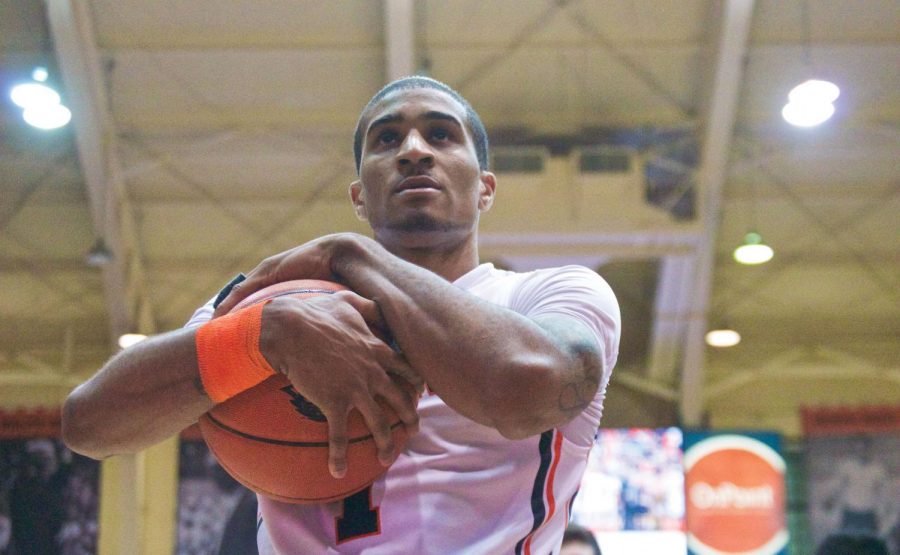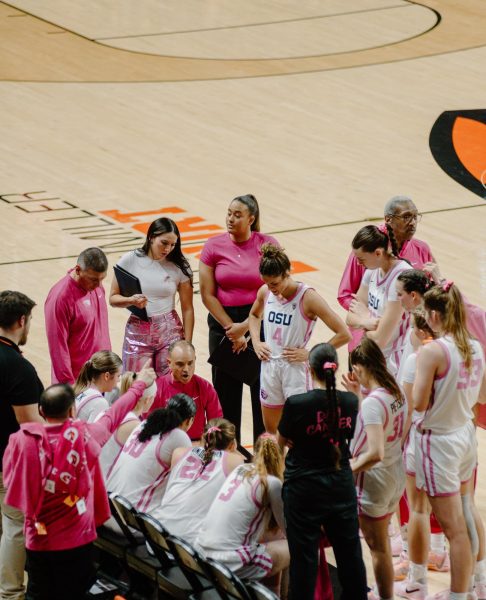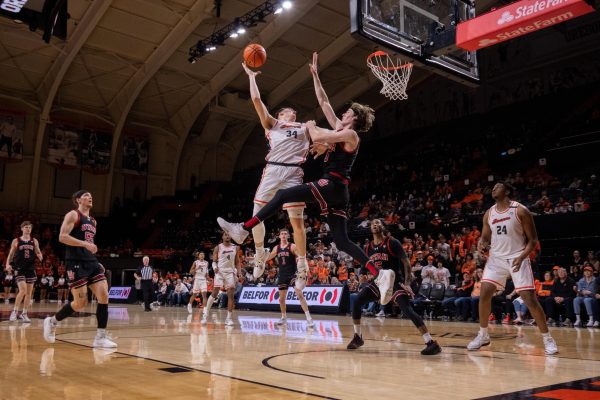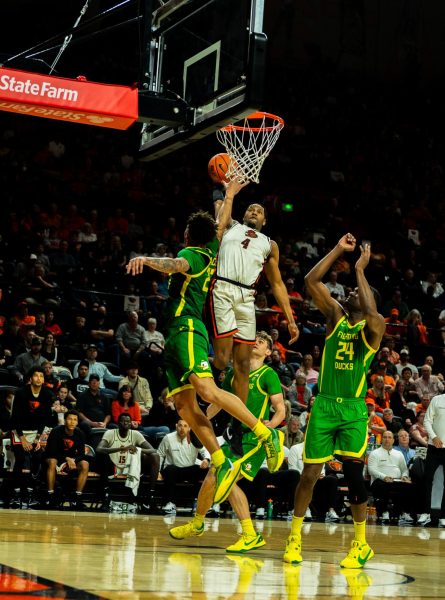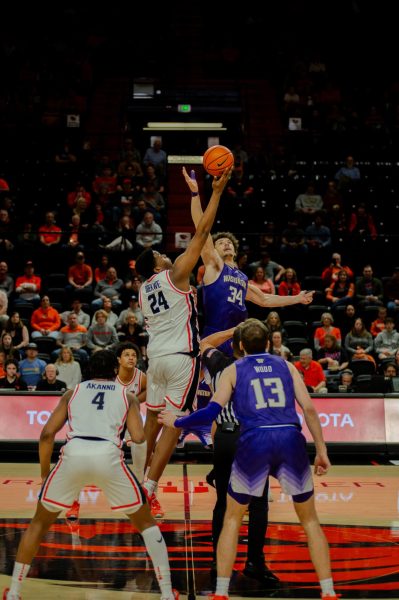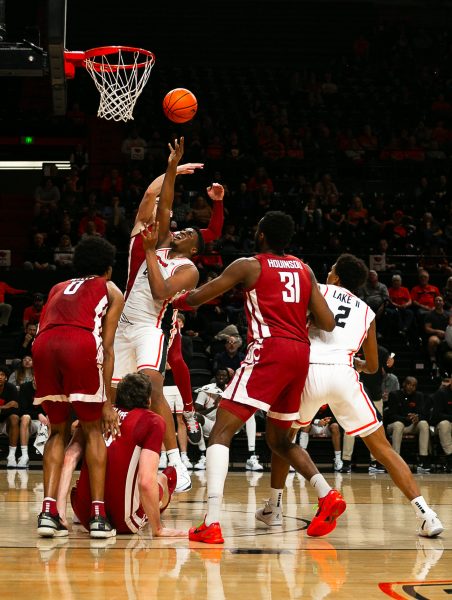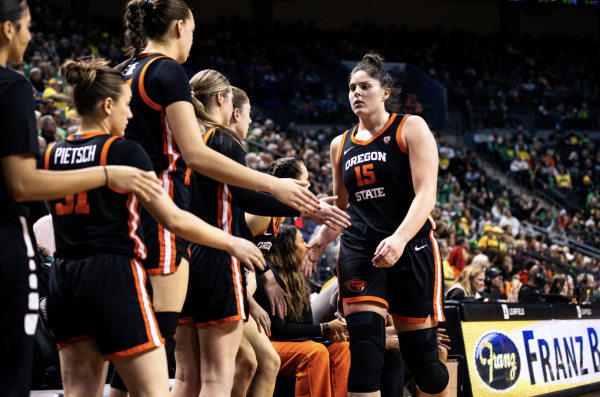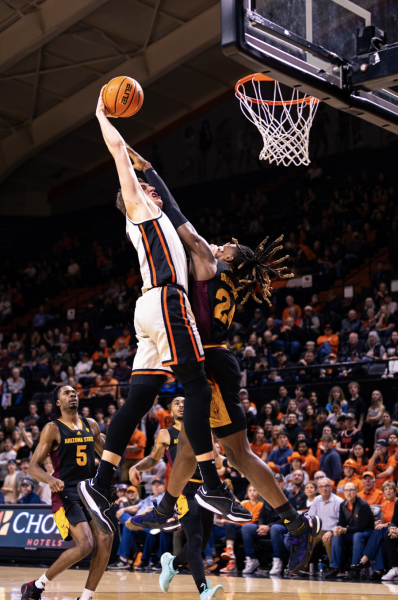Beavers get two wins, still trying to rebound
February 8, 2016
OSU is last in the Pac-12 in rebounding, but holds a two-game win streak
By Josh Worden
Senior Beat Reporter
Stephen Thompson, Jr. had just knocked down a deep 3-pointer on Saturday, but head coach Wayne Tinkle was irate.
Tinkle wasn’t mad because of the freshman guard’s shot, which gave OSU a 44-43 lead with eight minutes remaining against Colorado. It was rebounding — the Beavers had just allowed an offensive rebound and layup on a free throw attempt the previous possession — which made Tinkle call a timeout and accost his players verbally.
“It was ridiculous. They were manhandling us on the glass,” Tinkle said. “We said it in every timeout.”
Saturday’s game, in fact, marked OSU’s biggest deficit in rebounding of any Pac-12 game this season at 29-47, but the Beavers still beat the Buffaloes 60-56.
It has not been unusual this year for OSU (14-8, 5-6 Pac-12) to operate with a shortfall in rebounding: the Beavers are dead last in the conference in rebounding margin at minus-3.1 boards per game. In the first OSU-Colorado game this year, which the Buffaloes won by 17, Colorado had 15 more rebounds than OSU.
Usually, OSU has only won games when rebounding hasn’t been an issue. The Beavers’ only four games when equaling or outrebounding their opponent were also their four Pac-12 wins.
The narrative in losses has been the opposite: in OSU’s six Pac-12 games with fewer rebounds than the opposition, the Beavers have lost every time.
Saturday seemed like it was going to end the same way. Colorado had as many defensive rebounds as OSU did overall, and the Buffaloes’ 18 offensive boards give them the 47-29 lead in rebounding. The Buffaloes’ leading rebounder Josh Scott did not play in the second half with an injury. The Beavers blew an 11-point halftime lead by not securing a single rebound in the opening five minutes of the second half, and no OSU player had a defensive rebound in the first 9:27 after halftime.
Twice in the second half, the Buffaloes took a lead after an offensive rebound and putback after a missed free throw.
So, how did OSU win despite the scarcity of rebounds?
Tinkle pointed to the “counterbalance” of turnovers and free throws, which essentially made up for the Beavers’ deficit on the boards. Colorado committed 24 turnovers to OSU’s 12. Though the Buffaloes had 11 more second chance points than OSU, the Beavers had 10 more points off turnovers. Throw in OSU’s 18 free throws to Colorado’s 11, and the Beavers have already canceled out the rebounding deficiency.
Ironically, it was rebounding that gave OSU the final push for victory: senior guard Gary Payton II’s offensive board on a free throw with 14 seconds left earned him the game-sealing free throws.
“Unfortunately, there’s a big disparity on glass, but to win at home when you get dominated like that says a lot about our guys’ mental toughness,” Tinkle said.
To be fair, Colorado is as good of a rebounding team as OSU will face. The Buffaloes lead the conference in total rebounds, but OSU also spotted Stanford a 15-rebound advantage in a loss earlier this season and the Cardinal are 10th in the Pac-12 in rebounding.
OSU will play Stanford next, which may be a great measuring stick for how OSU will respond on the glass. If OSU gives up a similar advantage in rebounding, the 78-72 loss at home to Stanford could be repeated.
But then again, OSU got outrebounded by 18 to Colorado and still won. Maybe Tinkle’s team will find a way to do it again.
On twitter @BrightTies












































































































